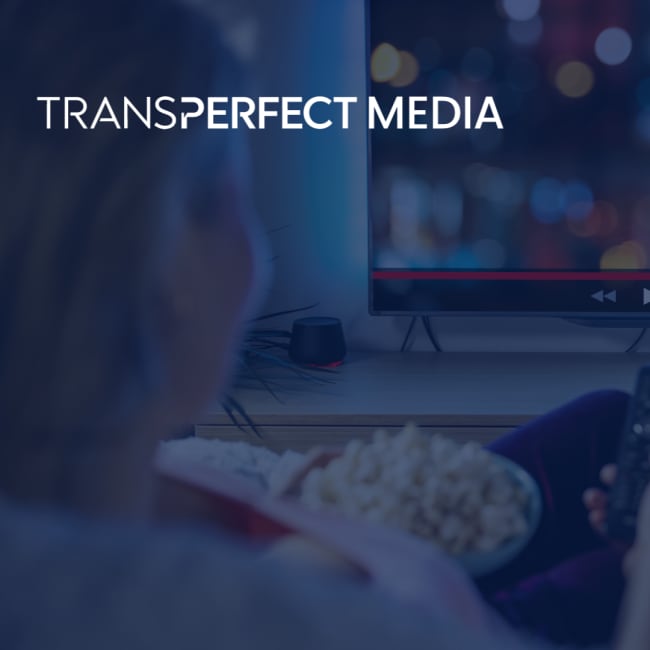Platform Language Services Thought Leadership

August 25, 2020

We’re at an interesting crossroads where digital content consumption is taking off and overtaking traditional content consumption. More content is being consumed on digital devices—from mobile phones to tablets to TV sets—and to distribute this content to the widest audience possible, more platforms, apps, websites, and social channels are being designed and deployed on a daily basis.
In the entertainment industry, VOD (video on demand) platforms are launching at unprecedented rates. This includes AVOD (advertising-based video on demand) platforms, such as Tubi TV and Pluto TV; SVOD (subscription-based video on demand) platforms, such as Netflix and HBO Max; and hybrids of the two, such as Hulu and NBCU’s Peacock.
Beyond the entertainment industry, VOD platforms have moved into the education and fitness industries, with programs such as Skillshare, MasterClass, and Peloton. We have even begun to see car manufacturers educating their dealers via similar platforms. Companies from all industries have started to offer the “Netflix experience,” and the explosion of niche platforms continues at a rapid pace. According to Statista, in 2018 the number of SVOD users worldwide was 283 million, and by 2022 that number is expected to reach 411 million.
As the domestic marketplace quickly becomes saturated, companies are setting their sights on international distribution. With this move comes a new set of challenges, and there is much to consider beyond simply translating a user interface and pushing “go.” Each international launch is nuanced, but for the most part, the below key areas will require a company’s attention, prior to a successful launch.
User Interface Localization and Testing
At a minimum, a platform’s user interface (UI) should be localized prior to international launch, if widespread usage is the ultimate goal. A few things to consider when it comes to translating the UI: How are strings being captured for translation, and how are they being fed back into the platform? What happens if the translated content does not fit into the space allotted for it in the app? Once translations are finalized, how will the localized platform’s functionality be assessed?
Beyond the localization of the UI itself, a key element of any platform launch is post-localization testing, during which translated UI strings are vigorously tested for functionality, correct display, and contextual accuracy on the browsers and devices on which the app will be available.
Subtitling, Captioning, and Voiceover
Content is, ultimately, what drives consumers to a platform. So making sure videos are available in a territory’s native language is important. This means content needs to be either subtitled or dubbed. The decision regarding which route to take will depend on a few key factors, including target market preference (some territories are traditionally dubbing markets, e.g., France, and some are traditionally subtitling markets, e.g., China), timeline for launch, and overall project budget. There are also nuances within subtitling and dubbing that will be dictated by content type, audience demographic, and the types of source files available.
If going the dubbing route, companies must also make sure that their chosen video player supports secondary audio or can stream multiple files at once.
Metadata Translation
For the purpose of this blog post, “metadata” refers to the title and description associated with a piece of content.
Oftentimes, companies make the mistake of focusing most of their resources on the translation of content (subs/dubs) and product (UI) and failing to allocate enough resources for metadata localization and optimization when launching a VOD platform in a new market.
There are three main considerations during the metadata localization process. The first is ensuring that metadata is translated to fulfill the appropriate character limitations that a platform requires (typically we see a short, medium, and long version of each content description, based on which device a consumer is using). The second is to decide on a tone and quality level for content metadata—should it read like a product description, or more like a piece of marketing content?
The third, which is often overlooked, is content optimization. Companies launching VOD internationally should ask themselves how their prospective customers are going to actually find their content. A really effective way to ensure content discoverability is to invest in international search engine optimization (ISEO), which is becoming increasingly vital as more streamers compete for a finite amount of consumer dollars. Since content metadata is indexed by search engines, optimizing it for search in a specific market directly correlates with that content’s discoverability.
Multilingual Customer Support
Once UI, content, and metadata are localized, a platform is almost ready for launch. But, what happens if a user in Germany has a technical issue and needs customer support? Multilingual customer support is necessary for user acquisition and retention. Companies who are launching international VODs need to decide how they will handle this. Will customer support be managed in-house, or outsourced to a third party? Will they offer international call centers, email support, or real-time chatbots? Each of these can be handled with automation or with a team of native language experts, depending on a company’s specific needs.
Legal Considerations
Legal content—terms and conditions, privacy policies, and subscriber agreements—also needs to be localized. In addition, from a legal perspective, local regulations and compliance laws (e.g., GDPR) need to be fully understood and adhered to prior to launch. This applies to accessibility laws and regulations as well. Nearly every nation has some laws regarding accessibility, which vary from country to country. The average cost of litigation when a company is sued for accessibility violations can be as high as $200,000 in some regions, so this is definitely something that is worthwhile to consider on the front end, rather than paying the price later.
Data Collection and Labeling
Finally, as platforms’ machine learning engines and proprietary algorithms become increasingly important, companies should consider how to ensure that their platform’s AI performs as well as possible internationally. Valuable data collection and labeling in each target market can be a key step in improving things like recommendation algorithms, relevancy judgements, and voice search.
In conclusion, there are many challenges to navigate prior to an international VOD launch. At TransPerfect, we call this a holistic approach to language services for the growing platforms and applications launching around the world today. We have brought together our core language services and technologies into one offering, Platform Language Services by TransPerfect. If you’re interested in expanding beyond domestic markets, please reach out to us at medianext@transperfect.com to learn more.



